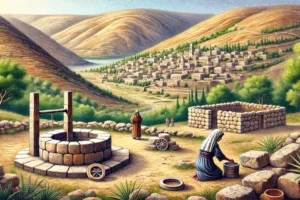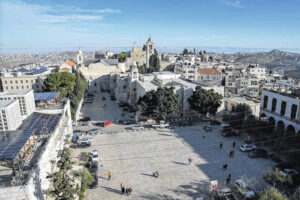
Mount of Olives: Jesus’ Ascension Location
The Mount of Olives is a significant biblical site located east of Jerusalem, renowned as the place where Jesus ascended to heaven. This event marks a critical moment in Christian theology, symbolizing Jesus’ exaltation and the promise of His return. The Mount of Olives is not only a geographical landmark but also a key site of religious pilgrimage and historical importance.
Quick Facts:
- Location: The Mount of Olives is situated east of Jerusalem, across the Kidron Valley.
- Biblical Significance: It is the site where Jesus ascended to heaven after His resurrection, as recorded in Acts 1:9-12.
- Geographical Features: The mount rises to about 2,710 feet (826 meters) above sea level, offering a panoramic view of Jerusalem.
- Historical Events: Besides the ascension, the Mount of Olives is also associated with significant events in Jesus’ life, including His teachings and prayers, notably in the Garden of Gethsemane.
- Religious Pilgrimage: The mount is a major site for Christian pilgrims, who visit to commemorate Jesus’ ascension and other biblical events.
The Mount of Olives holds a profound place in biblical history and Christian tradition. Rising to about 2,710 feet (826 meters) above sea level, it provides a stunning view of Jerusalem and is a site of numerous significant events in the life of Jesus.
Geographical and Historical Context: The Mount of Olives is part of a mountain range that runs along the eastern side of Jerusalem. Its strategic location across the Kidron Valley has made it a notable landmark throughout history. In the Old Testament, it is mentioned in connection with King David’s flight from Absalom (2 Samuel 15:30) and as a place of worship (Zechariah 14:4).
Jesus’ Ascension: The most significant event associated with the Mount of Olives in the New Testament is the ascension of Jesus. After His resurrection, Jesus spent forty days with His disciples, teaching them about the Kingdom of God. On the fortieth day, He led them to the Mount of Olives. As described in Acts 1:9-12, Jesus was taken up before their eyes, and a cloud hid Him from their sight. This event is a cornerstone of Christian faith, symbolizing Jesus’ exaltation and His return to the Father. The ascension also carries a promise: the angels present told the disciples that Jesus would return in the same manner they saw Him go into heaven.
Other Biblical Events: The Mount of Olives is also significant for other events in Jesus’ ministry. It is the location of the Garden of Gethsemane, where Jesus prayed before His arrest (Matthew 26:36-46). This garden is a focal point of Christian devotion, symbolizing Jesus’ submission to the Father’s will. Additionally, Jesus delivered the Olivet Discourse from the mount, where He spoke about the end times and His second coming (Matthew 24-25).
Theological Significance: The ascension of Jesus from the Mount of Olives holds deep theological implications. It signifies the completion of Jesus’ earthly ministry and His exaltation to the right hand of God. The ascension confirms Jesus’ divine nature and His role as the mediator between God and humanity. It also marks the beginning of the Church’s mission to spread the gospel to all nations, empowered by the Holy Spirit, who was promised to the disciples shortly after the ascension (Acts 1:8).
Modern-Day Significance: Today, the Mount of Olives remains a vital site for Christian pilgrims. Key sites include the Chapel of the Ascension, which commemorates the ascension of Jesus, and the Church of All Nations, located near the Garden of Gethsemane. Pilgrims visit these sites to reflect on the profound events that took place there and to deepen their spiritual connection to the life and ministry of Jesus.
The Mount of Olives, with its historical, theological, and geographical significance, continues to be a testament to the enduring impact of biblical events and their influence on Christian faith and practice. Its legacy as the site of Jesus’ ascension and its association with other critical moments in Jesus’ life make it a cornerstone of Christian pilgrimage and devotion.



